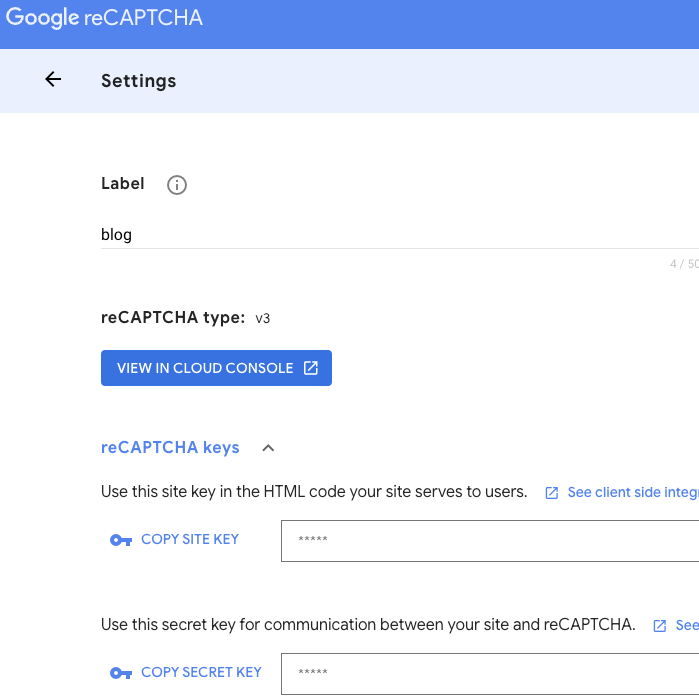React: ReCAPTCHA v3 Client and Server Demo

In this demo, I’ll use Google ReCAPTCHA v3 credentials within a React application built on Next.js. The ReCAPTCHA token will be generated on the client side and validated on the server side.
Links

Step 1: Generate Your ReCAPTCHA Credentials
Go to Google ReCaptcha V3 and generate your credentials.

Step 2: Import the ReCaptcha library
<Script src={`https://www.google.com/recaptcha/enterprise.js?render=${process.env.NEXT_PUBLIC_RE_CAPTCHA_SITE_KEY}`} />
Note: There are some packages you could use, but the implementation is simple.
Step 3: Call the execute method in your click handler
const loginClickHandler = (event) => {
event.preventDefault();
grecaptcha.enterprise.ready(async () => {
const token = await grecaptcha.enterprise.execute(
process.env.NEXT_PUBLIC_RE_CAPTCHA_SITE_KEY,
{ action: "LOGIN" }
);
await submit(token);
});
};
grecaptcha is an object injected by the imported script.
Note: When using Next.js, ensure all environment variables exposed in the browser are prefixed with
NEXT_PUBLIC.
When the user clicks login, the app automatically generates a captcha for them by calling two methods from the grecaptcha object:
window.grecaptcha.enterprise.ready: This makes sure the Google reCAPTCHA object is ready to go.window.grecaptcha.enterprise.execute: This generates the captcha token.
Finally, the data is sent to the backend (in my case, I’m using a Lambda function), along with the generated captcha token.
const submit = async (code) => {
await fetch("`/.netlify/functions/react-recaptcha-v3-nextjs", {
method: "POST",
headers: {
"Content-Type": "application/json",
},
body: JSON.stringify({ code }),
});
};
Note: If you are working with a form, you’d also include other field values like username, name, or any additional data your form collects.
Step 4: Validate the Captcha on the Backend
const validateReCaptcha = async (captcha) => {
const url = `https://www.google.com/recaptcha/api/siteverify?secret=${process.env.RE_CAPTCHA_SECRET_KEY}&response=${captcha}`;
const response = await fetch(url, {
method: "POST",
headers: {
"Content-Type": "application/json",
},
body: JSON.stringify({ captcha }),
});
return response.json();
};
validateReCaptcha is a backend method that calls a Google API endpoint, passing the SECRET_KEY (stored as an environment variable) and the Captcha token generated on the client.
If the Captcha is valid, the API response will look something like this:
{
"success": true,
"challenge_ts": "2024-11-24T03:04:34Z",
"hostname": "localhost",
"score": 0.9
}
Conclusion
ReCaptcha is crucial for securing forms, especially when you’re looking to prevent bots from submitting them. Google offers a free tier that provides up to 10,000 assessments per month (at the time of writing), making it a solid choice for many applications. The integration is made easier with the library that google provides. You’ll just need to pass your credentials: SITE_KEY on the client side and SECRET_KEY on the server side.
A key point to remember is that the SECRET_KEY should never be exposed on the client side, as this could compromise the security of your application. Only the SITE_KEY is meant for the client.